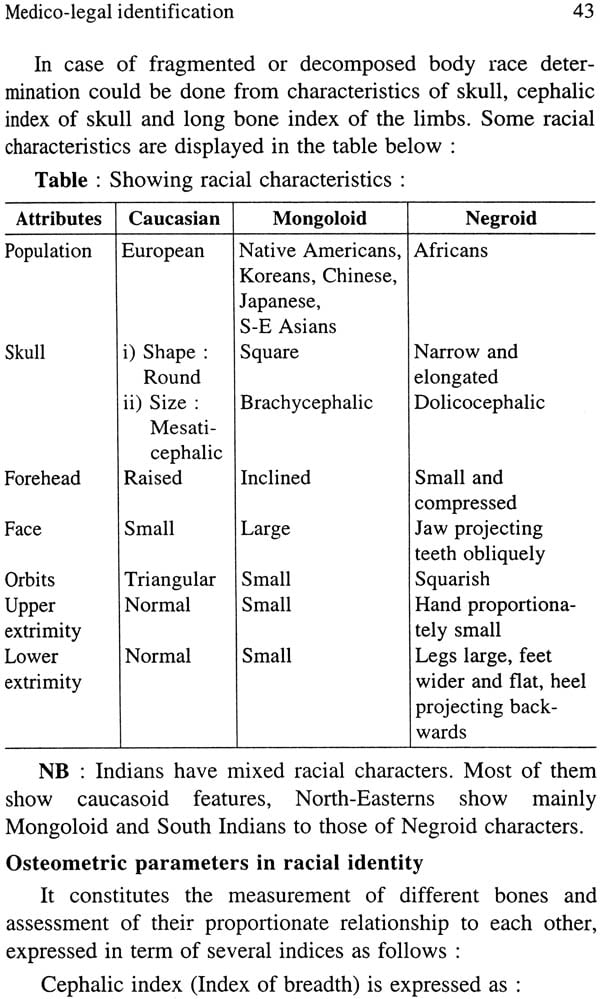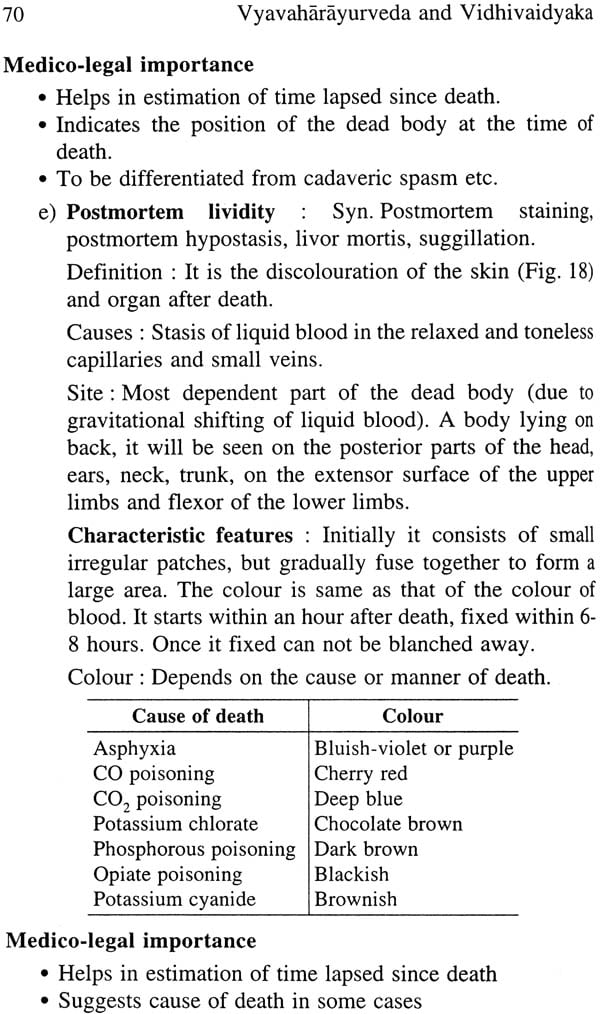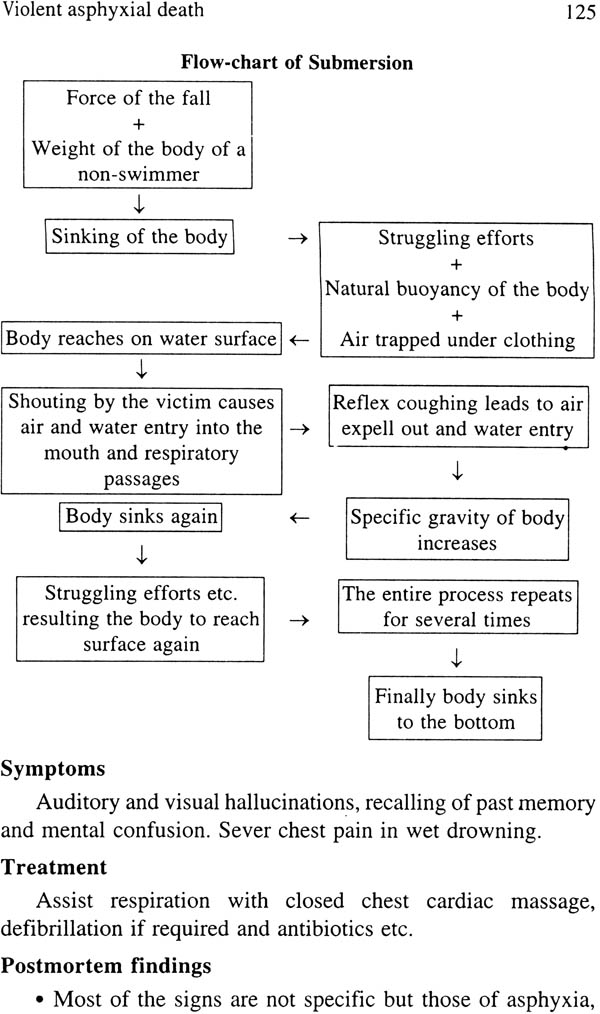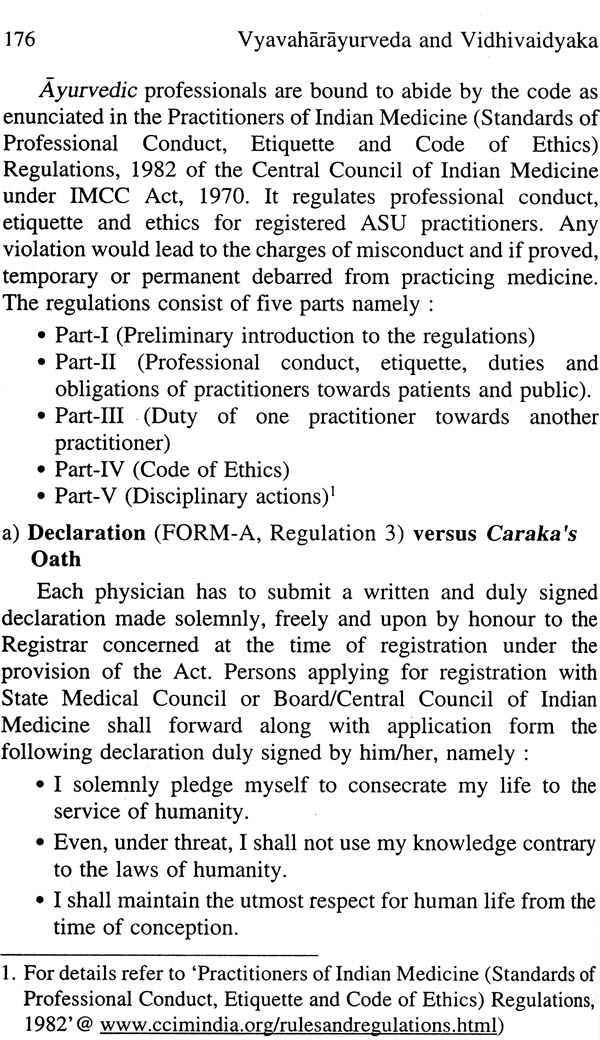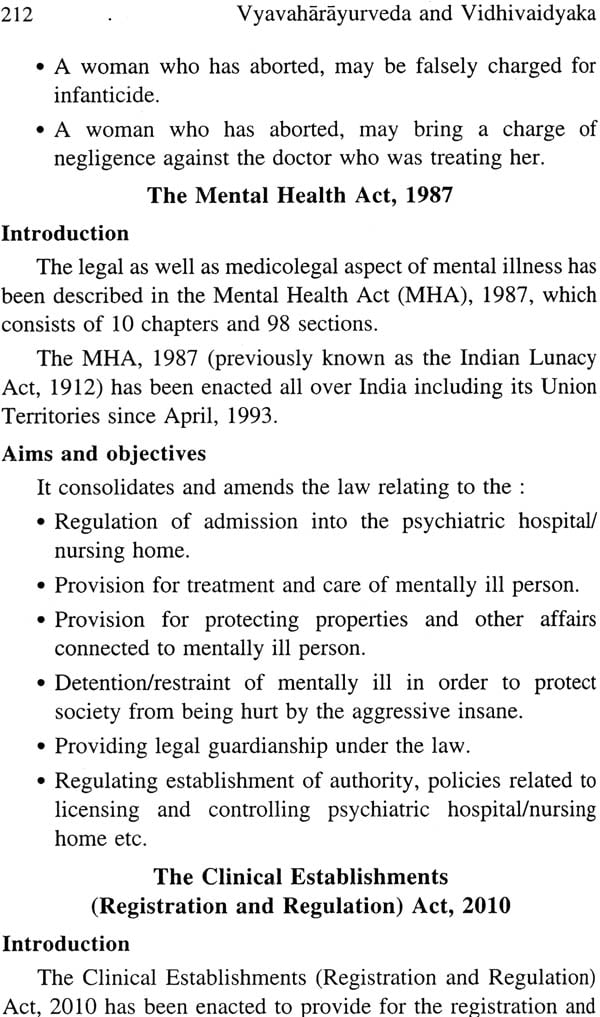
A Text Book on Vyavaharayurveda and Vidhivaidyaka (Forensic Medicine and Medical Jurisprudence)
Book Specification
| Item Code: | NAK955 |
| Author: | Dr. Binay Sen |
| Publisher: | Chaukhambha Visvabharati , Varanasi |
| Language: | English |
| Edition: | 2015 |
| ISBN: | 9789381301586 |
| Pages: | 264 |
| Cover: | Paperback |
| Other Details | 8.5 inch x 5.5 inch |
| Weight | 310 gm |
Book Description
The author Dr. Binay Sen was born in District-Dhubri (Assam) in the year 1977. He did his schooling from Agomani and passed both high school and higher secondary with first division and distinction in physics and chemistry. Completed B.A.M.S. from Govt. Ayurvedic College and Hospital, Guwahati (Assam), M.D. (Ay) and Ph.D. in Dravyaguna from Banaras Hindu University. During the senior residency at BHU, he got selected as Lecturer- Agadatantra and Vidhi Ayurveda in UPPSC, Allahabad with top rank. He joint Govt. Ayurvedic College & Hospital, Varanasi (U.P.) and presently working at Govt. Ayurvedic College and Hospital, Atarra, Banda (U.P.) in the post of Lecturer in Agadatantra and Vidhi Ayurveda. The author started his career in SSMD. Ayurvedic College & Hospital, Moga (Punjab) before registering in Ph.D. He also got the National merit scholarship from Govt. of Assam and JRF from UGC.
He has many national and international publications and presented several papers and delivered guest lectures in seminars, conferences and workshops.
I feel immense pleasure to write the foreword to the book 'Vyavaharayurveda and Vidhivaidyaka' authored by Dr. Binay Sen, Lecturer, Agadatantra and Vidhi Ayurveda, Government Ayurvedic College and Hospital, Atarra, Banda (UP). In Semhitii period among eight branch of Ayurveda, this is taken as Vi$agaravairodhika- ptesemen«, Agadatantra, Yise-cikitss, Demstii: and so on. According to need of time this branch is developed and it covers some of the untouched aspect which are essential to enlighten at present era to make it Dr. Binay Sen had done both M.D. (Ay) and Ph.D. under my supervision. Since then he has been dedicated to the classical approach, analytical and critical thinking about the principles as well as the contents of the Ayurveda. Being scholar of Dravyaguna, this commendable work of Dr. Sen in the present context is highly appreciable.
All the chapters and their contents are arranged according to the prescribed syllabus of CCIM, New Delhi. Their presentations are very systemic ground, neither concise nor too detail easy to read and understand even with meager knowledge of English language and subjects also ......... and almost all possible aspects. Looking at the subject matters especially Vyavaharayurveda and Vidhivaidyaka, Death, Injury, Weapons, Violent asphyxial death, Sexual offences and Sexual perversions, Medical ethics and Types of Vaidya seem that the author has gone through the very depth to the knowledge of both Ayurveda and contemporary Forensic medicine. I believe on and confident that this book will provide a unique plethora for the students as well as research scholars.
This is my blessing to Dr. Binay Sen that he continues academic work with full devotion in future.
Writing a text book on Vyavahariiyurveda and Vidhivaidyaka has been definitely a challanging task to me. The contents of Vyavahariiyurveda, though scattered in Ayurvedic texts, found more flourished and ethically sound in perspective of practice of medicine, leading a healthy individual and social life than any other system. On the other hand, the contents of Vidhivaidyaka is not much more developed or relevant to the prevailing Forensic medicine. In ancient Ayurveda, it is observed that physicians were asked to keep away from giving evidence in the court of law as well as the prognosis of patient should not be disclosed to patient/family members. Perhaps it might have certain legal restrictions then. Time has changed and many principles, techniques, methods, newer amendment in the Laws and Acts are being adopted and forced among the health professionals. Health care delivery system has got top most attention in the global scenerio. Unfortunately, most of the Ayurvdic doctors those are rendering health services especially in periphery handling many medica-legal cases for the patient interest are not being protected by the legal system. Ayurveda laid down the one of the codes of medical ethics as : ....................
It means a physician should always make effort to provide health to the patient by all means even at the cost of own's life. If a legal supporting system is not developed, there will always be a conflict between the medical ethics and the professional negligence. To practice Vyavahariiyurveda and Vidhivaidyaka (Forensic medicine and Medical jurisprudence) the Council (CCIM, New Delhi), policy makers and lagislators must come foreward with keen interest to provide some provisions in the Regulations, Laws and Acts, so that Ayurvedic physician will be legally allowed to handle certain medico-legal cases in their day to day practice. An integration will be helpful with Forensic discipline in providing training, conducting part- time diploma or certificate courses to the teachers may enable to overcome such legal restrictions.
The aim and objective of this book is to explore some hidden concept of the subject matter and their relevancy in contemporary practice of legal medicine. It has been a great endavour to me for such work, which need experization in practical and theoritical knowledge of Forensic medicine and legal procedures. I'm fortunate enough to had some exposures in Forensic medicine during my under graduate study, which helped me a lot while incorporating the subject matters in the present form.
I have strong believe on the part of above verse and always be looking forward for valuable concerns, suggestions, thoughts, ideas and especially for indicating those error done in this work.
| Chapter 1 | Vyavahayurveda and vidhivaidyaka (Forensic medicine and Medical Jurisprudence) | 3-12 |
| Chapter 2 | Legal procedures | 13-30 |
| Chapter 3 | Medico legal identification | 31-50 |
| Chapter 4 | Forensic odontology | 51-54 |
| Chapter 5 | Forensic serology | 55-57 |
| Chapter 6 | DNA profiling | 58-60 |
| Chapter 7 | Death | 61-74 |
| Chapter 8 | Post-mortem examination and exhumation | 75-80 |
| Chapter 9 | Injury | 81-102 |
| Chapter 10 | Introduction to weapons | 103-105 |
| Chapter 11 | Dowry death and domestic violence | 106-108 |
| Chapter 12 | Violent asphyxia death | 109-129 |
| Chapter 13 | Virginity, Pregnancy, Delivery, Abortion and Infanticide | 130-140 |
| Chapter 14 | Impotence and Seterility, Artficial insemination, Surrogate baby, Lagitimacy, Battered baby and Unborn child | 141-150 |
| Chapter 15 | Sexual offences and sexual perversions | 151-166 |
| Chapter 16 | Forensic psychiatry | 167-172 |
| Chapter 17 | Forensic Science laboratory | 173-174 |
| Chapter 18 | Medical ethics | 175-190 |
| Chapter 19 | Types of Vaidya | 191-195 |
| Chapter 20 | Laws and Acts related to medical practitioners | 196-219 |
| Chapter 21 | Medical records | 220-222 |
| Chapter 22 | Acquired immune deficiency syndrome and feigned diseases | 223-227 |
| Index | 228-236 | |
| Appendices | 237-248 | |
| List of Figures | 249-264 |

